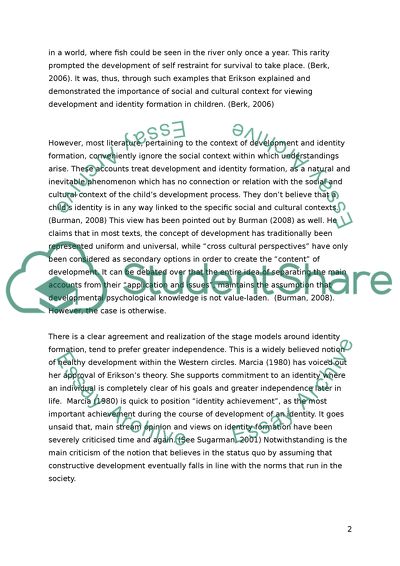Cite this document
(Analysis of Statement that the Development of Childs Identity Is Best Assignment, n.d.)
Analysis of Statement that the Development of Childs Identity Is Best Assignment. Retrieved from https://studentshare.org/psychology/1740932-it-has-been-argued-that-the-development-of-a-childs-identity-is-best-understood-as-development-in-context-critically-evaluate-this-claim
Analysis of Statement that the Development of Childs Identity Is Best Assignment. Retrieved from https://studentshare.org/psychology/1740932-it-has-been-argued-that-the-development-of-a-childs-identity-is-best-understood-as-development-in-context-critically-evaluate-this-claim
(Analysis of Statement That the Development of Childs Identity Is Best Assignment)
Analysis of Statement That the Development of Childs Identity Is Best Assignment. https://studentshare.org/psychology/1740932-it-has-been-argued-that-the-development-of-a-childs-identity-is-best-understood-as-development-in-context-critically-evaluate-this-claim.
Analysis of Statement That the Development of Childs Identity Is Best Assignment. https://studentshare.org/psychology/1740932-it-has-been-argued-that-the-development-of-a-childs-identity-is-best-understood-as-development-in-context-critically-evaluate-this-claim.
“Analysis of Statement That the Development of Childs Identity Is Best Assignment”, n.d. https://studentshare.org/psychology/1740932-it-has-been-argued-that-the-development-of-a-childs-identity-is-best-understood-as-development-in-context-critically-evaluate-this-claim.


